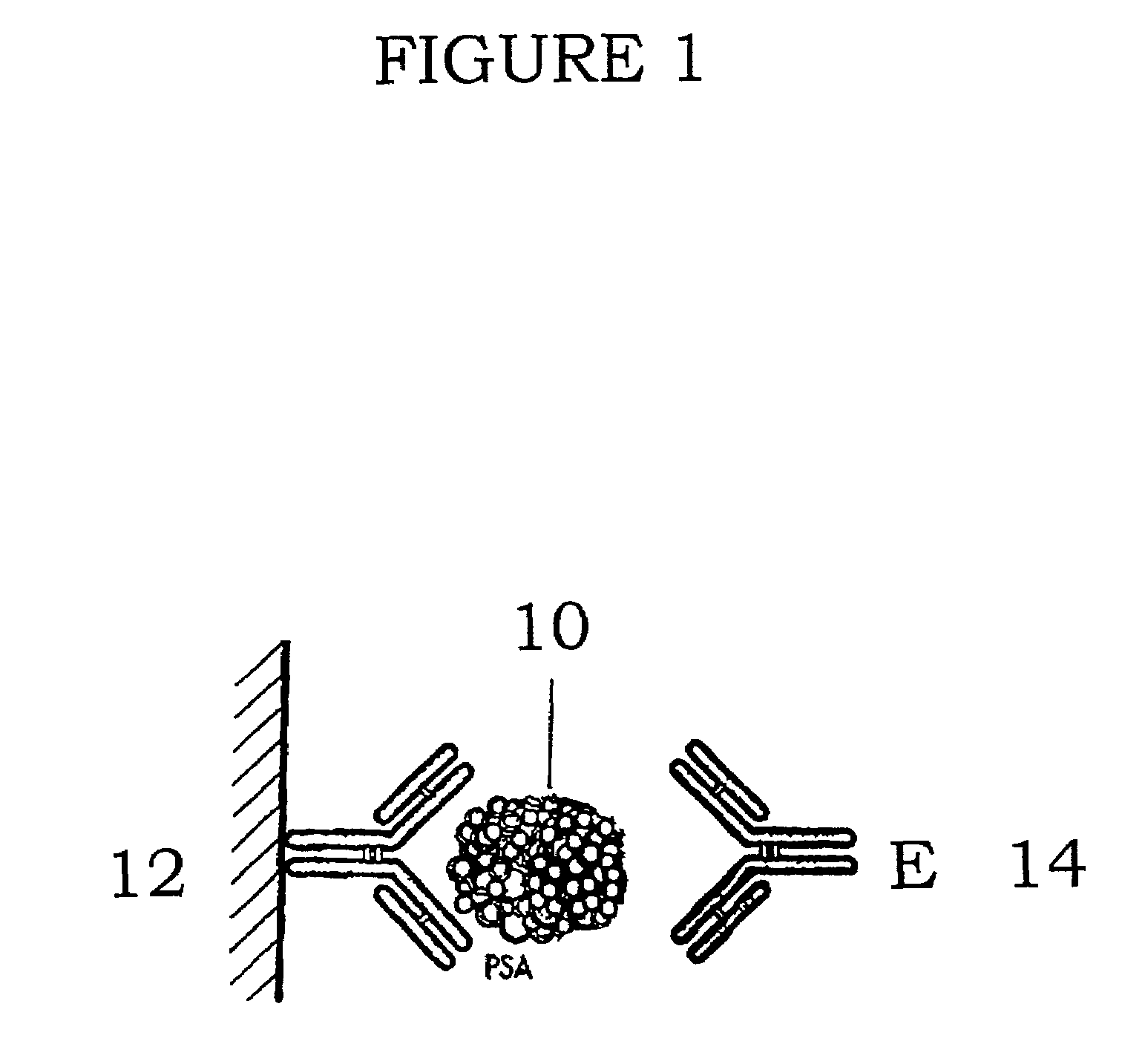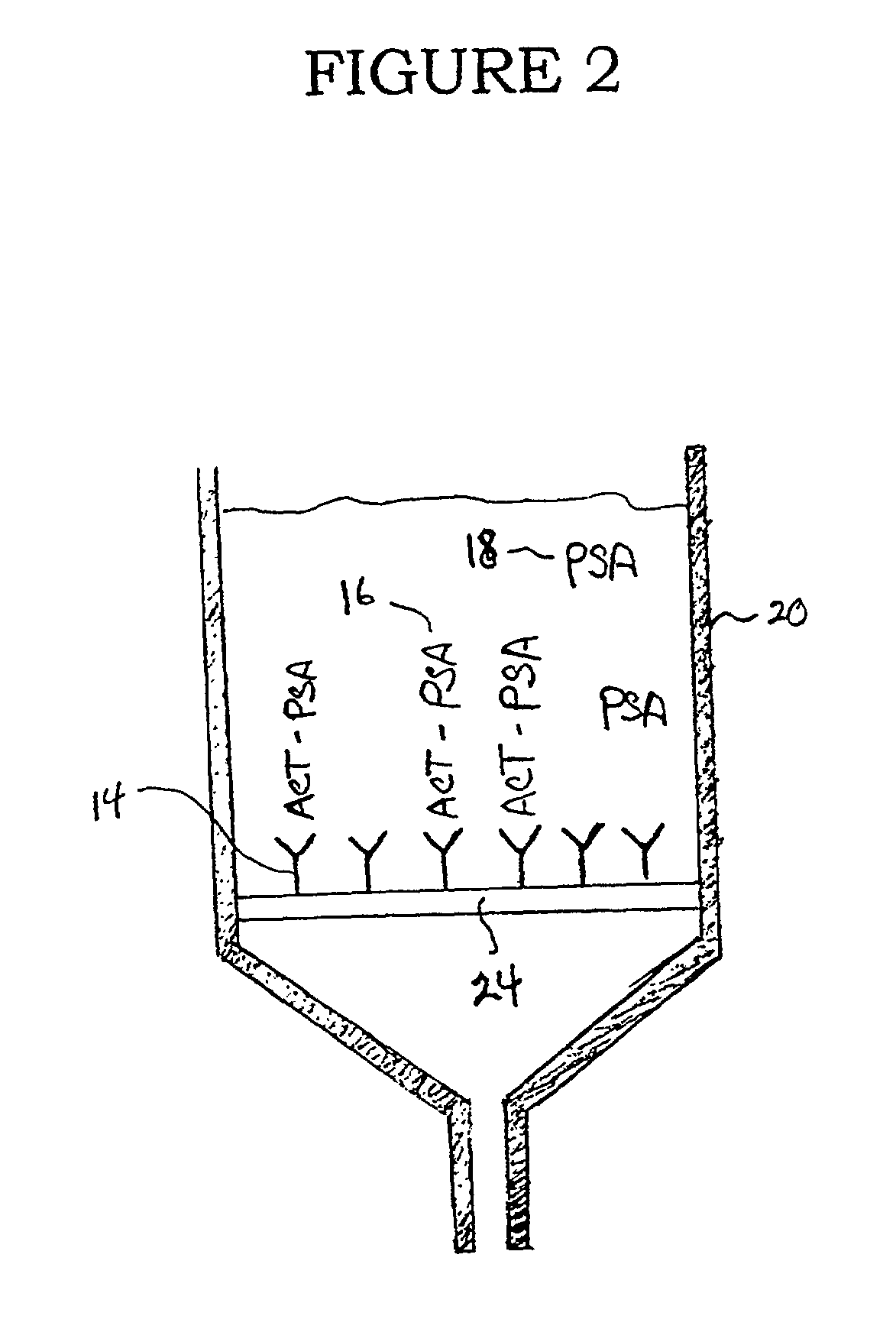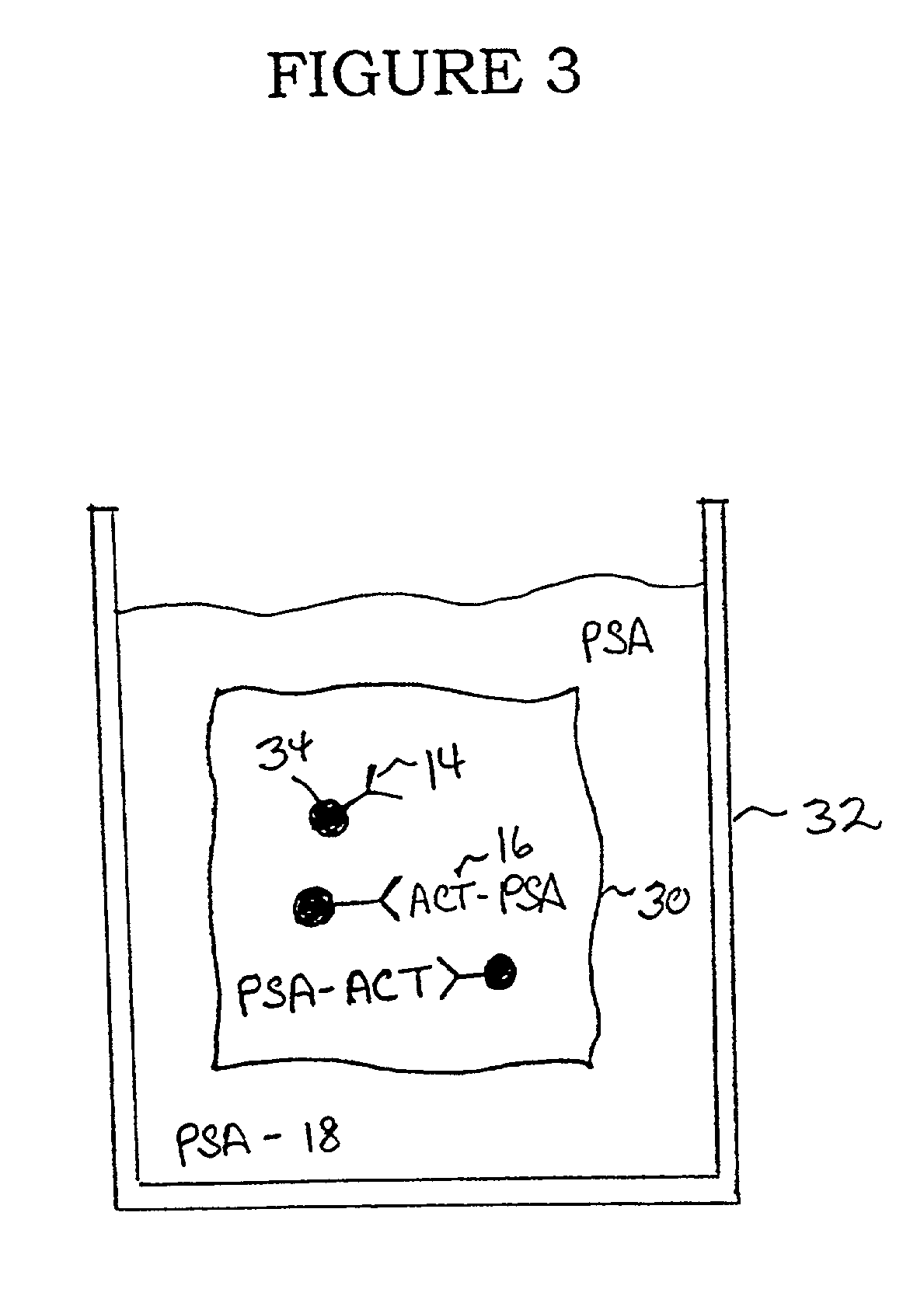Methods and devices for detecting non-complexed prostate specific antigen
a prostate specific and non-complex technology, applied in the field of methods and devices for detecting non-complex prostate specific antigens, can solve problems such as insufficient mass
- Summary
- Abstract
- Description
- Claims
- Application Information
AI Technical Summary
Benefits of technology
Problems solved by technology
Method used
Image
Examples
Embodiment Construction
PSA Assay
[0024]In preferred embodiments described below, the present method comprises measuring non-complexed PSA using any specific binding assay that measures either total PSA or free PSA. Suitable PSA assays include a sandwich monoclonal / monoclonal immunoassay manufactured by Tosoh Medics, Inc. (Tosoh) of Foster City, Calif. USA for total PSA, one made by Hybritech, Inc. of San Diego, Calif. USA for free PSA, or one made by CIS-Bio of Saclay, France for free PSA. FIG. 1 shows diagrammatically how, in the final configuration in a traditional use, this assay captures PSA (10) using a capture antibody (12) and detects PSA using a labeled antibody (14).
Pretreatment Filter Device
[0025]As shown in FIG. 2, a pretreatment filter device comprises a vessel (20) into which the fluid sample can be placed either by pouring, pipetting, or other conventional means for transferring fluids. One wall or surface of the vessel has an opening (22) for allowing the fluid sample to be removed from the ...
PUM
| Property | Measurement | Unit |
|---|---|---|
| mass | aaaaa | aaaaa |
| PSA | aaaaa | aaaaa |
| total PSA | aaaaa | aaaaa |
Abstract
Description
Claims
Application Information
 Login to View More
Login to View More - R&D
- Intellectual Property
- Life Sciences
- Materials
- Tech Scout
- Unparalleled Data Quality
- Higher Quality Content
- 60% Fewer Hallucinations
Browse by: Latest US Patents, China's latest patents, Technical Efficacy Thesaurus, Application Domain, Technology Topic, Popular Technical Reports.
© 2025 PatSnap. All rights reserved.Legal|Privacy policy|Modern Slavery Act Transparency Statement|Sitemap|About US| Contact US: help@patsnap.com



